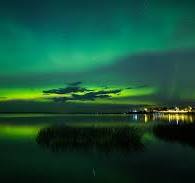LAC LA BICHE – A SHORT HISTORY by Ralph Bice December 3, 1973
I managed to borrow from the Centre Libary a very fine history of the little town of Lac La Biche. That name was given to the lake by the early French trappers and means, I believe, ‘Lake of the Little Deer’.
The first white man of record spent the winter of 1754-55 with Blackfoot Indians in that area. This was Anthony Henday, who was in the employ of the Hudson’s Bay Company. There is no apparent record of what he found there or the type of game. In 1778 Peter Pond from a lake now called Pond Lake in Saskatchewan set up the first trading post in Alberta. I could not find any mention of the quantity or kinds of furs he traded for.

In 1797 David Thompson came to Lac La Biche and built a trading post for the North West Trading Company. Less than a year later Peter Fiddler using the same route as Thompson came up Beaver River and then portaged into Lac La Biche and built Greenwish House for the Hudson’s Bay Company. The North West and the H.B.C. were both on the south shore of the lake.
The waters from Beaver Lake and the Beaver River flowed eastward into Hudson Bay. Waters from Lac La Biche flow northward and into the Mackenzie.
The furs gathered then were mostly beaver, fox, bear, lynx and coyote. Smaller furs such as squirrel weasel and muskrat were hardly ever caught.

From 1800, for almost a hundred years, the H.B.C. almost ruled Alberta. The post at Lac La Biche was entirely destroyed by fire just after the end of World War One. Believe the native people who lived in that part of the west were Cree and Chippewan. The early white traders and trappers married native women hence the beginning of the Metis.
The first Missionaries were the Oblate Fathers. They came to Alberta in 1844 and to Lac La Biche a few years later. There are records that the Grey Nuns, a devoted and dedicated group were in Alberta previous to 1862 and the fine building they had is still standing and still in use at the present time. The early priests discovered that the soil was good for grain, also for vegetables and cleared and drained small patches for such gardens. A grist mill was brought in 1862 and a year later was producing flour.
What a trip it must have been for these early Christians, especially for the women. It does not state how long the trip from Montreal would take but for those ladies, many raised in Convents, it must have been quite an experience. And then to transport a grist mill all the way from the east. No mention is made of power and since the area is very flat it could not have been water powered. But it does show that these first missionaries were devoted and determined workers.
Around 1908 began the shift from fur trade economy and that way of life to agriculture. There are now many fine farms and ranches all producing. Then in 1915 came the railroad which meant more jobs such as section hands, contracts for ties, logging operations and commercial fishing. Then in 1917 the first big wave of homesteaders. This was not prairie but land to be cleared. But the land is fairly flat and rolling, hardly any stones and it was unusual to see large, perhaps fifty acres of tilled soil in one field.
In 1947 came a boom in mink farming. The lake was producing many tons of tullibee, which we call chub, and this was excellent, cheap mink food. Was told that some of the best mink going to auction came from Lac La Biche. There are still a few ranches producing the different mutations now asked for by the fur trade but as all over Canada standard bred mink ranches have had to fold up.
In 1954 came centralizing of schools. Around 1960 social assistance became a way of life and that meant a small army of civil servants arrived to administer different programs. Finally around 1965 the area became modern in a big way. Good paved roads, electricity, telephones and gas heating. The Vocational Centre is one of the most modern in the province.
Had a few drives around the area as we had to go quite a ways for our trapping. Saw abandoned mink and fox ranches which first started in 1930-31, now only a few remain. Most of the houses are fairly new and modern. The farm buildings are well kept and so much machinery. There were combines still working and some rape still standing. But the houses in town were not crowded and there seemed so much space. The streets must be twice as wide as we are used to in the east. Many of the local people are Metis but all are proud citizens. Only trouble, I only had three weeks there and twice that long would not give you time to see all you would like.

